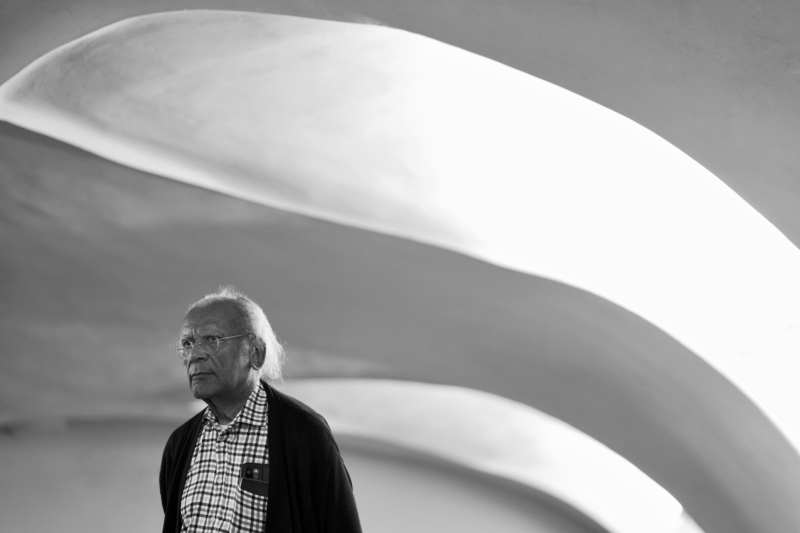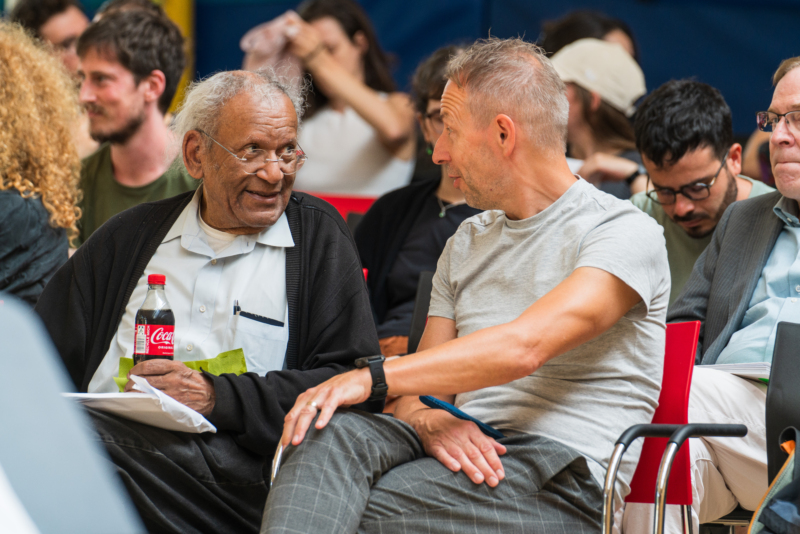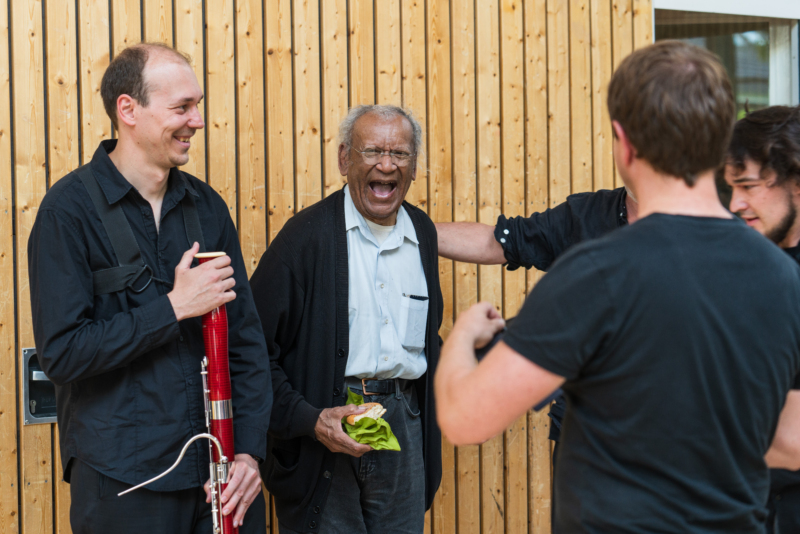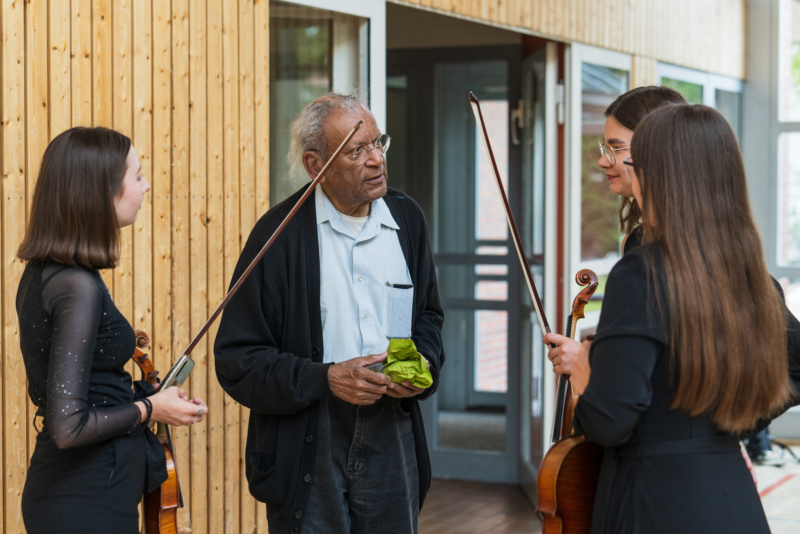READER: THUNDER MUSIC
07.08.2023

Anthony Braxton: Thunder Music (2023, WP)
Anthony Braxton (Saxophone, Electronics, Composition)
James Fei (Saxophone)
Katherine Young (Bassoon)
William Forman (Trumpet)
Roland Dahinden (Trombone)
Reut Regev (Trombone)
Andreas Borregaard (Accordion)
Anne Rhodes (Voice)
Lisa Willems (Voice – HYOID voices)
Fabienne Seveillac (Voice – HYOID voices)
Juliet Fraser (Voice)
Andreas Halling (Voice – HYOID voices)
Nick Hallett (Voice)
Štěpán Janoušek (Voice)
Carl Testa (Double bass & Electronics)
George Cremaschi (Double bass)
Thunder sounds recorded by and licensed from Frank Bry (The Recordist). Other thunder sounds by Jason Romney licensed under a Creative Commons Attribution 3.0 Unported License. Some animal sounds in the public domain from the National Park Service. Other animal sounds recorded by and licensed from Daan Hendriks.

The world premiere of Thunder Music with an ensemble assembled especially for this concert with 16 internationally acclaimed musicians under the direction of Anthony Braxton himself is a creative combination of artists from the U.S. and Europe, instrumentalists and vocalists, who are well acquainted with Braxton’s language and improvisational practice, but at the same time have to be ready at any second to react to new musical situations of their fellow players. Each ensemble member is given a stand-alone app that includes thunder sounds and super collider manipulations that are integrated into the musical environment in real time on stage. A fascinating journey into an unknown musical world beyond known boundaries.
With the friendly support of the Ernst von Siemens Music Foundation
ANTHONY BRAXTON

Anthony BraxtonMy life and my music has been in what could be called an in-between universe. Not black, not white, not jazz, not classical music. Even so, I love jazz. I love classical music. I love Bach. I love Charlie Parker. I like March marching music, folk music. I like country and western music. I consider myself to be a professional student of music.
This in-betweenness is perhaps the most defining trait of Anthony Braxton’s music. Also because he was denied recognition within the jazz scene or even the contemporary music scene for a very long time. His works challenge common listening and playing habits and leave genre boundaries far behind. As already mentioned, he has never been able to come to terms with terms such as “new music” or “jazz”. Braxton likes to call his transidiomatic music “creative music”.
Anthony BraxtonThis term might not be the best representation of my work, but in fact, my work is rejected by the jazz people who say it's not jazz. And the contemporary classical people say, Oh, this is not contemporary music. And they're both right. My music is like my life in between the African American world and between the European and American universe. I have not tried to evolve a music because I was angry at something and rejected jazz or rejected contemporary classical music. Just the opposite is true. My music is an affirmation of world music and my relationship between jazz and Western art – is part of a larger body.
Braxton’s music is often based on mathematical formulas, symbols, diagrams or graphs that he designs himself. He has invented several notation and playing systems. They all relate to each other and build on each other. As with a construction kit, new structures can be created again and again.
The “Language Music” is a composition system that Braxton originally used for his solo improvisations – in the meantime, however, the “Language Music” forms the basis for most of his compositions and other systems: e.g. the “Ghost Trance Music” (which is mainly characterized by long tones), the “Falling River Music” (accented long tones), the “Diamond Curtain Wall Music” (trills or ornaments), “Echo Echo Mirror House Music” (multiphonics) or “Pine Top Aerial Music” (which would be short attacks). These various systems and languages act as a kind of vocabulary for Braxton’s music. Over the last 50 years Anthony Braxton has been working on his “ground floor” – a highly complex system that combines, among other things, all the concepts just mentioned.
Anthony BraxtonMy system has its own DNA, that would give me the opportunity to build models, to create a philosophic system, to create a music system, to create a ritual and ceremonial system. […] I took this approach because I was not interested in existential freedom, nor was I interested in existential precision ism. I was looking for an in-between space that made sense for me in terms of not just the fusing of European and African, but I was looking for what I was hearing, I was looking for myself.
In concert, Anthony Braxton now presents the next evolution of his system: Thunder Music.

